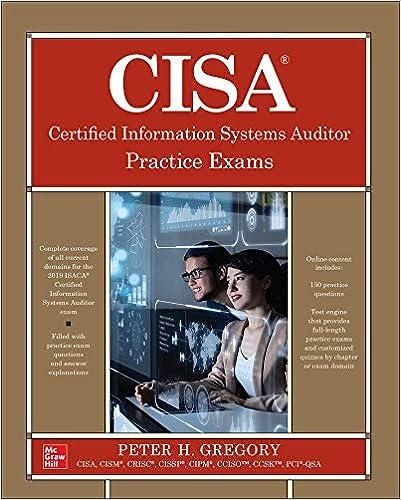Answered step by step
Verified Expert Solution
Question
1 Approved Answer
Whitfield (Whitfield) Corporation owns a small machine shop that manufactures components for printers. Whitfield classifies these components as either standard or deluxe. Of the 100,000
 Whitfield (Whitfield) Corporation owns a small machine shop that manufactures components for printers. Whitfield classifies these components as either standard or deluxe. Of the 100,000 components they manufacture each year, 70,000 are standard and 30,000 are deluxe. Direct manufacturing labor costs an average of $40 per hour. They currently use a single cost pool to allocate overhead. Whitfield operates at capacity and currently allocates all overhead using direct labor hours as the allocation base. As they have grown the deluxe business, the have been less competitive from a pricing and overall profitability perspective in the standard business. A new entrant in the market, Machine Specialties Inc. (MSI), has been offering pricing for standard components at a price below Whitfield's total manufacturing cost using their current costing system. MSI does not manufacture deluxe components. Whitfield has been forced to match their price on most occasions. Whitfield's president is puzzled by this new competitor's ability to sell standard components at such a low price, and is frequently overheard muttering "We're losing our butts on standard components!" He has asked you to look into the matter. You suspect that Whitfield's traditional, volume-based productcosting system may be causing cost distortions between the firm's two products. Before expressing this opinion in your upcoming meeting with the president, however, you need to do some analysis. You've determined that an activity-based costing system with three categories for assigning overhead: design, setup, and administration might be a more accurate way to allocate overhead costs. To see how activity-based costing would affect the costs of standard and deluxe components, you collected the following information for the fiscal year 2022 that just ended: Other Cost/Activity Information Required: 1. Calculate the total unit cost of a standard component under the activity-based costing approach. 2. Why is the total unit cost using the activity-based costing approach so much lower than their current costing approach? (You shouldn't need to calculate total cost under the current approach to answer the question - take my word for it that it is higher than what you calculated in the first question)
Whitfield (Whitfield) Corporation owns a small machine shop that manufactures components for printers. Whitfield classifies these components as either standard or deluxe. Of the 100,000 components they manufacture each year, 70,000 are standard and 30,000 are deluxe. Direct manufacturing labor costs an average of $40 per hour. They currently use a single cost pool to allocate overhead. Whitfield operates at capacity and currently allocates all overhead using direct labor hours as the allocation base. As they have grown the deluxe business, the have been less competitive from a pricing and overall profitability perspective in the standard business. A new entrant in the market, Machine Specialties Inc. (MSI), has been offering pricing for standard components at a price below Whitfield's total manufacturing cost using their current costing system. MSI does not manufacture deluxe components. Whitfield has been forced to match their price on most occasions. Whitfield's president is puzzled by this new competitor's ability to sell standard components at such a low price, and is frequently overheard muttering "We're losing our butts on standard components!" He has asked you to look into the matter. You suspect that Whitfield's traditional, volume-based productcosting system may be causing cost distortions between the firm's two products. Before expressing this opinion in your upcoming meeting with the president, however, you need to do some analysis. You've determined that an activity-based costing system with three categories for assigning overhead: design, setup, and administration might be a more accurate way to allocate overhead costs. To see how activity-based costing would affect the costs of standard and deluxe components, you collected the following information for the fiscal year 2022 that just ended: Other Cost/Activity Information Required: 1. Calculate the total unit cost of a standard component under the activity-based costing approach. 2. Why is the total unit cost using the activity-based costing approach so much lower than their current costing approach? (You shouldn't need to calculate total cost under the current approach to answer the question - take my word for it that it is higher than what you calculated in the first question) Step by Step Solution
There are 3 Steps involved in it
Step: 1

Get Instant Access to Expert-Tailored Solutions
See step-by-step solutions with expert insights and AI powered tools for academic success
Step: 2

Step: 3

Ace Your Homework with AI
Get the answers you need in no time with our AI-driven, step-by-step assistance
Get Started


